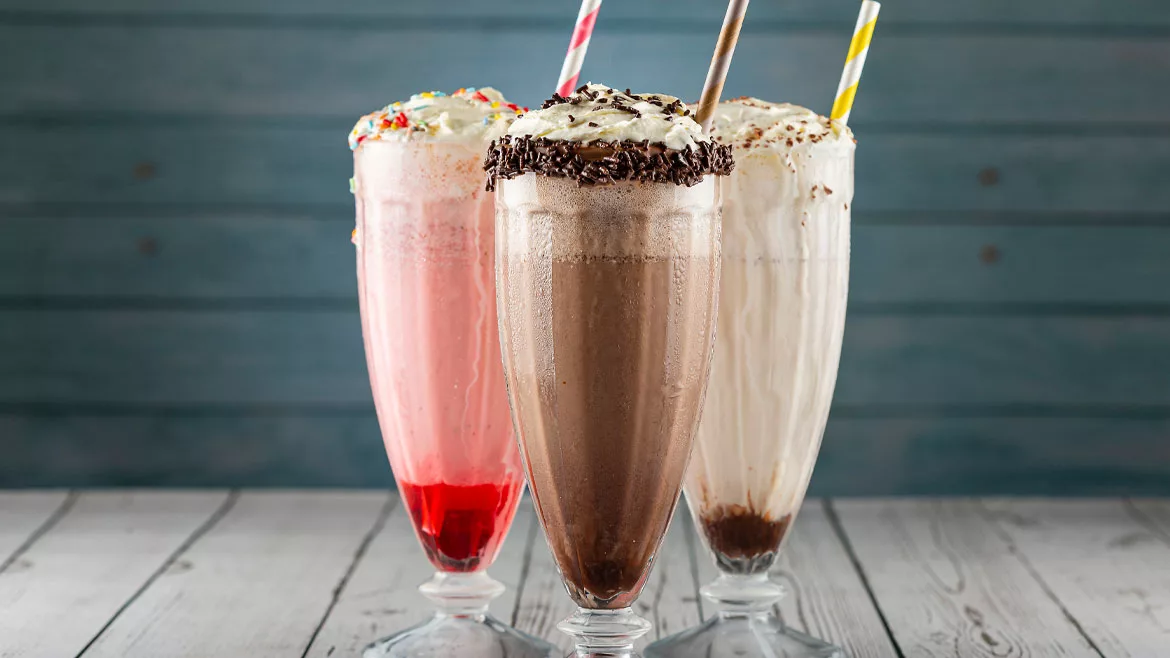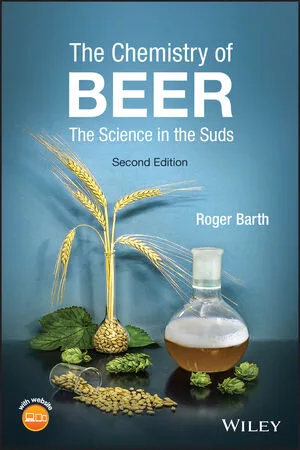Lagunitas' Chicago plant allows consumers to get a peek inside the craft brewer's operations
Craft brewer already has plans to expand brewing and packaging operations
“Come with me, and you’ll be, in a world of pure imagination. Take a look, and you’ll see into your imagination.” Those famous first lines from “Pure Imagination,” the song sung by Gene Wilder in “Willy Wonka and the Chocolate Factory,” might be designed to invoke a sense of childhood bliss in relation to candy and sweet treats in the 1971 movie, but at Lagunitas Brewing Co.’s Chicago facility, the music is designed to welcome legal-drinking-age consumers into a more adult experience.
As one enters the brewery, which was completed in 2014, windows allow a person to look into some of the craft brewer’s operations. A walk down the entrance hallway features a lightshow coordinated to “Pure Imagination” as well as bold neon paint spelling out the word “Taproom.” Before one turns the corner at the end of the long hallway, a piece of artwork made out of bottle caps from various Lagunitas beers depicts the female icon from its Little Sumpin’ Sumpin’ Ale.
“Our emphasis was to create an experience for people unlike anything they’ve ever had before,” says Karen Hamilton, regional marketing manager east of the Rockies for Lagunitas.
For consumers (and their dogs), they also get the chance to visit “The Basement,” the first stop for the free guided tours where they can receive samples of the year-round and seasonal brews that are on tap as well as explore some of the entertainment options including a giant Jenga game, pinball machine, race car video games and a piano. The hospitality staff also is on hand to share stories and history about Lagunitas, which is headquartered in Petaluma, Calif.
However, guided tours are not the only option for consumers hoping to get a peek inside the 300,000-square-foot facility. Unlike the company’s California facility, consumers can take their own tours at the Chicago site because of the layout and safety parameters designed within the plant.
“It’s a beer city inside the city, and that’s what we planned for, so people would not only be able to come out, taste our beers and see what we’re up to [but] explore our facility,” Hamilton says. “You can do this on your own … because you’re on the catwalks and you’re entirely safe.”
In addition to guided and non-guided tours, the Taproom at Lagunitas opens at 11 a.m. Wednesday through Sunday and serves the company’s portfolio of beers as well as a plethora of food options. Musical entertainment also joins the mix from 4:20 to 7:30 p.m., and last call is at 8:15 p.m. “We’re not a late-night place,” Hamilton says. “It’s not what we wanted to do.”
But it looks as though the company has found a recipe that resonates with consumers, as the company has received positive feedback through online reviews as well as thank-you emails from people dubbing the experience “the coolest thing ever,” Hamilton notes.
“Whether it really is the coolest thing ever, that remains to be seen, but it just means that we did the job that we were hoping to do,” she says.
Scaling up
Although the folks at Lagunitas have found ways to make consumers feel welcomed and celebrated at their Chicago facility, the plant’s main purpose remains to be its beer production. Formerly a steel fabrication plant, Lagunitas came in and cleaned and retooled the plant all within an 11-month timespan.
“It was 11 months from the time we put our first cut into the concrete to start creating this brewery,” Hamilton says. “Eleven months was when the first beer bottle rolled off the line. That’s ridiculous; I don’t know of another brewery that has been able to do it that fast, but we worked hard and we worked fast.”
Currently, the facility runs as a 250-barrel system, but in December it received another 250-barrel brewhouse, Hamilton says. “A 250-barrel brewhouse can put out approximately 600,000 barrels [a year], so two of them would be 1.2 million barrels [that] would be able to come out of this brewery once running at full capacity,” she adds.
In addition to the second brewhouse, Lagunitas will be adding a second bottling line, keg filler, more fermentation tanks and a second filtration system, doubling its capabilities.
Its current product lines feature a bottling line that can accommodate 500 12-ounce bottles per minute (BPM), 300 22-ounce BPM and 115 32-ounce BPM, while the keg line can fill one keg a minute, says Sungo Wang, packaging manager at Lagunitas’ Chicago facility. Wang notes that the second kegging line will be running by this summer and the second packaging line will be operational in 2016. The new keg line will operate at a speed of two kegs a minute, he adds.
For its secondary packaging, the plant is able to package 12-packs of 12-, 22- and 32-ounce bottles, 24-packs of 12-ounce bottles, and 12-ounce loose bottles. “We on average run four to six brands a week and do package changeovers two to three times a week,” Wang says.
The packaging operations usually run a three-shift format five days a week with 75 percent of the product being year-round offerings and 25 percent being seasonal, he notes.
Based on demand, the plant also varies its barrel production. “[It] depends on the month, but [it] ranges between 4,500 barrels a week to as high as 8,500-9,000 barrels a week,” Wang says. “[We’re] hoping to do 400,000 this year out of Chicago.”
To support its overall production process, the facility also employs an automated system for its brewhouse. “We use … software to open the valves, measure flow rates, [and] to measure temperatures and concentration of chemicals,” says Mary Bauer, head brewer at Lagunitas’ Chicago facility. “It’s very automated, but that’s a huge benefit to us because it allows for a lot of consistency.”
Bauer adds that the automated processes are the same in Petaluma, allowing for consistency across the board.
An additional bonus to this state-of-the-art equipment is the alarms that will alert the brewer if one of the processes is not meeting the beer’s specific parameters. “The nice thing about the automation is it gives us notice right away when something’s going on, so we can act on it and fix it and create the same beer as if nothing ever happened,” she says.
In addition to its automation, Lagunitas also employs some sustainable practices in its beer production including its energy-recovery tank. Through the tank the company is able to condense the steam off a kettle into hot water, which then is stored in a vessel and used to preheat the next brew in the kettle so it doesn’t have to use as much steam.
“We’re kind of using the steam from the previous brew to heat up the other brews so we don’t need to use as much energy or steam to heat it up to a boiling temperature, so it definitely saves on energy costs as well as time,” Bauer says. “It makes our process more efficient.”
Water usage processes also benefit from the use of a heat exchanger. When it is time to pitch the yeast, the brewing process requires a cool down method, Bauer explains.
“We’ll chill the hot wort that’s coming through with ice water — it’s at 2 degrees Celsius. That water becomes hot with the exchange of heat,” she says. “Well, now that hot water that we just made from cooling down the wort is then mashed in and makes the next brew. So, instead of having to heat water to make brewing water, we just used a heat exchanger to make our hot water.”
Although water efficiency use is the No. 1 sustainable practice in the Chicago facility, it also utilizes a balance line to reuse its carbon dioxide (CO2). “As you ferment in your fermenter, you create alcohol, and CO2 is a byproduct,” Bauer says. “When it’s time to go to filtration, we will balance the use of CO2 from the fermenter to balance the pressure on our bright beer tank, otherwise you would just have to use CO2 from our bulk storage tank, which is just using, using, using. Here, we’re using the CO2 that was produced [and sending it] down to the bright beer tank to keep constant pressure on the two tanks.”
Consistent quality
Similar to how the brewing process uses the same automation system as Petaluma in order to maintain consistency, the facility follows the same program within its quality assurance division.
“One of the challenges when you scale up from a single [site] to a second or however many more you’re planning on building is, if you don’t have a formally documented program with rigorous testing protocols, you can run into the problem where you have people performing tests differently and ending with different results,” says Aaron Golston, quality assurance manager for Lagunitas’ Chicago plant. “Even though the beer may actually be the same if you don’t follow the same testing protocol, you could end up with a different result, and that could be troubling considering we use the same ingredients [and] the same process.”
To ensure there are no variances between the beers — whether produced in Petaluma or Chicago — the quality assurance technicians utilize a formally documented program and standardized quality procedures program between the two breweries.
The quality assurance team also will perform three tasting parameters, Golston adds. Beer is sampled in the fermenter, the bright beer tank and the package to make sure the tastes remain consistent, he says. A program also has been instituted in which the two breweries will each ship samples of beers in order to do blind tastings.
“We set up three samples, two of them the same one [and] one of them is different, and people will try those and see if they can tell the difference, and they’ll write what they preferred and what one was better than the others,” Golston explains. “We’ve actually had a really good track record of not being able to detect the difference for the most part between the two. There’s obviously batch-to-batch variations, but I think overall we’ve done a very good job, and Tony [Magee, the founder of Lagunitas] has been pleased with how the quality compares between the similar ones.”
Although Lagunitas’ tagline is a comical interpretation of the phrase “beer speaks, people mumble,” it looks as though there is nothing to mumble about when it comes its newest brewery.
Looking for a reprint of this article?
From high-res PDFs to custom plaques, order your copy today!






